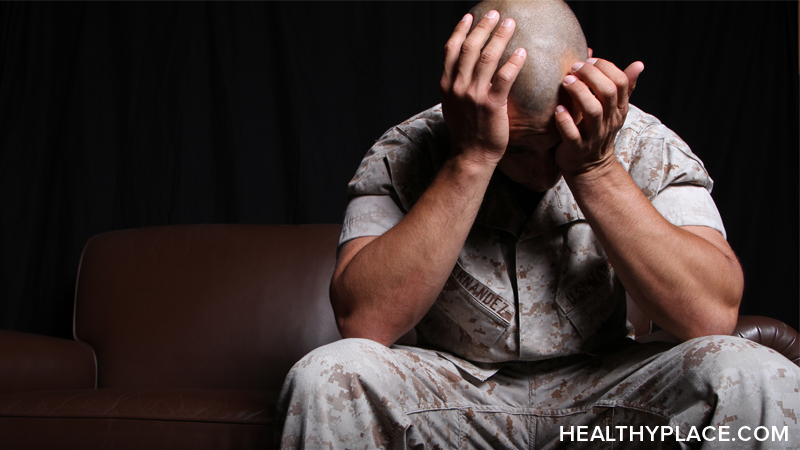PTSD: A Big Problem for Military Soldiers in War Zones

Posttraumatic stress disorder (PTSD) in military personnel is a big problem for those who have served in war zones. While the majority of people in the military will not get PTSD – even after serving in a combat zone – some will. Those in the military are at an increased risk of PTSD because of the number and severity of stressors that are common in a war zone and in military duties (PTSD Statistics and Facts).
Stressors that May Cause PTSD in the Military
The wars in Afghanistan and Iraq have been the longest combat operations since Vietnam. Many stressors and possible traumas face those who have served in Operation Iraqi Freedom (OIF) and Operation Enduring Freedom (OEF).
Military PTSD is affected by stressors like being attacked or by knowing someone else in the military that was killed and these are stressors that most soldiers face. In Iraq, of those in the Army:
- 95% have seen dead bodies.
- 93% have been shot at.
- 89% have been attacked or ambushed.
- 86% have received rocket or mortar fire.
- 86% know someone who has been killed or seriously injured.
The numbers are lower, but still significant, for those who served in Afghanistan.
It is also worth knowing that many men and women are sexually assaulted and harassed in the military. Military Sexual Trauma (MST) is an additional major factor in developing PTSD in the military (PTSD in Rape and Abuse Victims).
How Many Soldiers Have PTSD?
Even of those soldiers who have faced the above stressors, most do not have PTSD. Between 11-20% of those who served in OIF and OEF have PTSD in a given year; whereas, about 12% of veterans from the Gulf War (Desert Storm) have PTSD in a given year.
About 30% of Vietnam veterans have had PTSD in their lifetime (Viet Nam Veterans Still Living with PTSD 40+ Years Later).
What Increases the Risk of PTSD in War Veterans?
Research indicates that the following are factors that increase the risk of PTSD in war veterans of OIF and OEF:
- Longer deployment times
- More severe combat exposure, such as:
- Deployment to "forward" areas close to the enemy
- Seeing others wounded or killed
- More severe physical injury
- Traumatic brain injury
- Lower rank
- Lower level of schooling
- Low morale and poor social support within the unit
- Not being married
- Family problems
- Member of the National Guard or Reserves
- Prior trauma exposure
- Female gender
- Hispanic ethnic group
PTSD Symptoms in the Military
PTSD symptoms for those in the military are the same as for those with non-military PTSD. Types of symptoms in military PTSD include:
- Persistent re-experiencing of events (such as through illusions or hallucinations)
- Avoidance of anything that reminds the sufferer of the trauma (such as avoidance of people, places and activities that trigger memories of the event)
- Negative changes in thoughts, feelings or perceptions related to the trauma (such as persistent distorted thoughts about the cause of or consequences of the traumatic event)
- Changes in reactivity (such as an exaggerated response when startled)
Fewer PTSD cases in the military may get treatment because of the large number of concerns a soldier may have including effects on his or her career, the appearance of being weak, privacy and many others.
While there is no doubt that PTSD from serving in a war zone can be devastating, what’s important to emphasize is that PTSD treatment works, it shortens the duration of symptoms and people use it to recover from PTSD every day.
APA Reference
Tracy, N.
(2021, December 17). PTSD: A Big Problem for Military Soldiers in War Zones, HealthyPlace. Retrieved
on 2026, January 10 from https://www.healthyplace.com/ptsd-and-stress-disorders/ptsd/ptsd-a-big-problem-for-military-soldiers-in-war-zones



